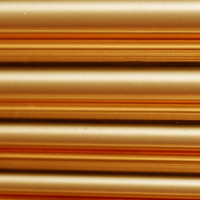Copper Slimes
Classification and Labelling Proposals for Slimes and Sludges, Copper Electrolytic
On behalf of the SIEF Facilitator for “Slimes and sludges, copper electrolytic” the European Copper Institute is authorised to communicate this information to all participants in the SIEF for the EINECS number listed below.
| ECI Ref | Substance | SIEF Facilitator |
| B6 | Slimes and Sludges, copper electrolytic (EC 266-972-5) |
KGHM Polska Miedz S.A. |
Slimes and sludges, copper electrolytic are defined as :
A complex combination of insoluble compounds produced by precipitation during the copper electrolytic refining or winning processes. It consists typically of various metals (such as precious metals, copper, antimony, tin, selenium, tellurium, arsenic, lead and nickel), as well as their oxides and/or sulphates.
The Joint Registration dossier was successfully submitted to ECHA on 23rd August 2010. Members of the ECI-managed Consortium, along with any purchasers of the appropriate Letter of Access, were provided with the necessary documents, plus the required REACH IT security token.
In April 2014, this joint dossier was extended to satisfy REACH Art.10 conditions, including the provision of a joint Chemical Safety Report (CSR).
The substance is used solely as Intermediate.
Depending on their own manufacturing and use profiles, individual members of this joint registration may have decided to register the substance in accordance with Strictly Controlled Conditions (SCC) requirements (REACH Art. 17/18), or as a full registration (REACH Art 10). Letter of Access purchasers are requested to contact ECI should they wish to upgrade their own registration from Art 17/18 to Art 10 and to secure the rights to use the Joint CSR.
ECI’s REACH Classification, Labelling and Packaging proposals for Slimes and Sludges, copper electrolytic have been assessed in the REACH dossier in accordance with Regulation (EC) 1907/2006 and the CLP Regulation (EC) 1272/2008. The rationales for these proposals are contained in the Joint Submission dossier submitted to ECHA by the Lead Registrant.
The 2014 conclusions below reflect the latest Adaptation to Technical Progress (ATP):
Slimes and sludges, copper electrolytic
| Hazard Class and Category Code(s) | Hazard Statement |
| Acute Tox. 3 (oral) | H301: Toxic if swallowed |
| Acute Tox. 4 (inhalation) | H332: Harmful if inhaled |
| Skin Irr. 2 | H315: May cause severe skin burns and eye damage |
| Eye Damage 1 | H318: Causes serious eye damage |
| Resp. Sens. 1 | H334: May cause allergy or asthma symptoms or breathing difficulties if inhaled |
| Skin Sens. 1 | H317: May cause an allergic skin reaction |
| Repr. 1A | H360DF: May damage fertility or the unborn child. Suspect damaging fertility |
| Muta. 2 | H341: Suspected of causing genetic defects |
| Carc. 1A | H350: May cause cancer |
| TOT Rep. Exp. 1 | H372: Causes damage to organs through prolonged or repeated exposure. (Affected organs: central nervous system, blood and kidneys, lungs; Route of exposure: inhalation or ingestion) |
| Aquatic Acute 1 | H400: Very toxic to aquatic life |
| Aquatic Chronic 1 | H410: Very toxic to aquatic life with long lasting effects |
ECI will continue to offer Letters of Access to registrants. Please contact the Secretariat at reach@copperalliance.org for the terms and conditions, as well as the application form.
Earlier communications made to this SIEF can be requested from ECI at reach@copperalliance.org:
- ECI Communication to SIEF – September 2010
- ECI Communication to SIEF – March 2010
- ECI Communication to SIEF – October 2009
- ECI Communication to SIEF – February 2009
- Lead Registrant and ECI Communications to ECHA – June 2009
